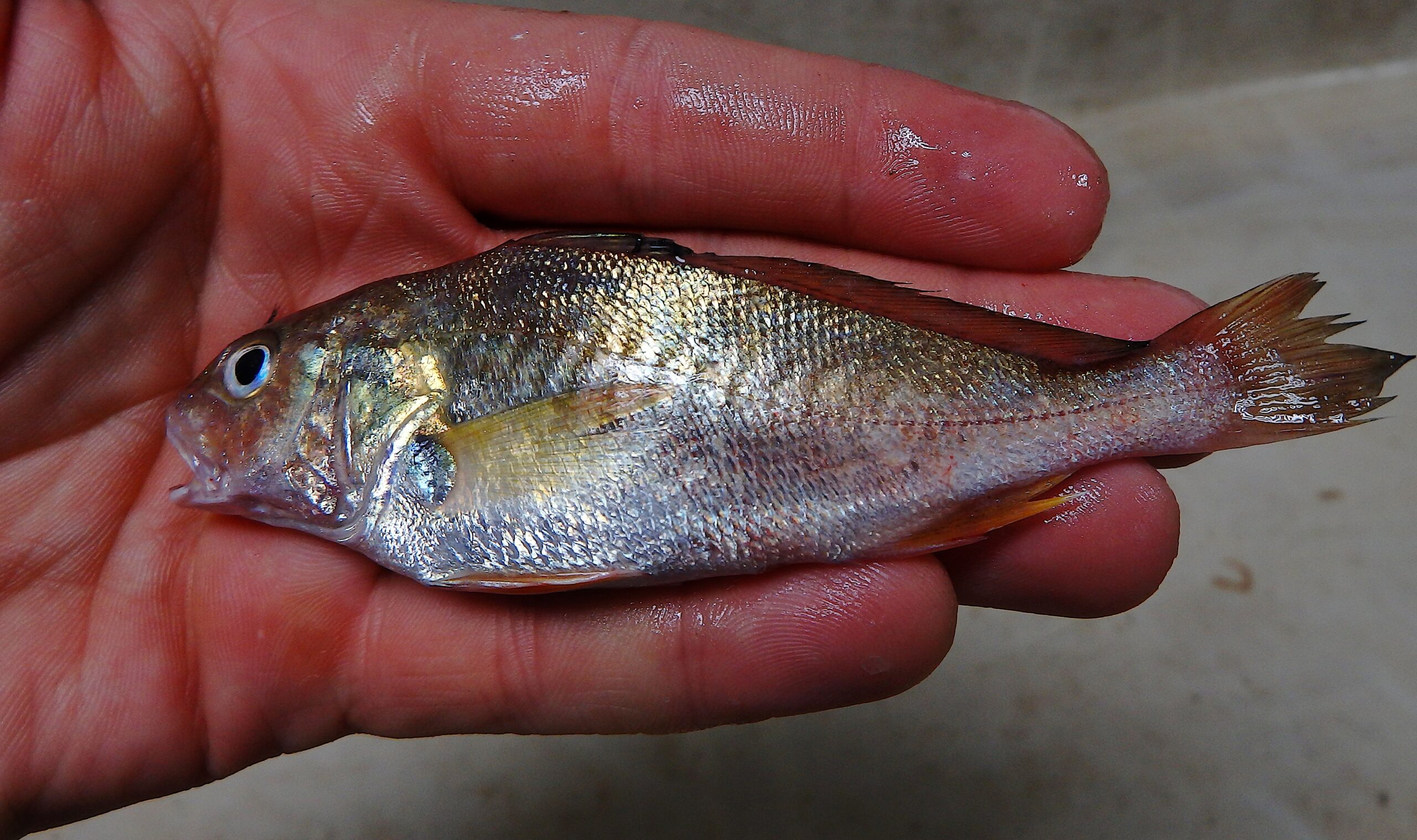What Do Fish Fossils Reveal About Environmental Conditions in North Carolina’s Coastal Plain Several Million Years Ago?

Bladen County was likely a primary nursery area for Atlantic croaker and spot.
Research Need
Fish otoliths — the inner ear bones that help fish balance themselves — can provide information on different species of fish when other remains might not have survived. In fact, a whole field of fish science revolves around the study of these little bones, which can reveal fish species, age, and movement. Similar to tree rings, fish otoliths lay down roughly one pair of translucent and opaque bands every year, and the chemicals in the bony otolith provide historical information on the water habitat and diet of fishes.
In particular, otoliths offer potentially valuable information about various environmental conditions during the Pliocene Epoch — 5.3 to 2.6 million years ago — especially when no additional skeletal remains exist. But in North Carolina, research on otoliths from the Pliocene are limited to two principal studies of sites in the central coastal area of North Carolina.
What did they study?
Researchers obtained otoliths from the Pliocene shell layer at the Elizabethtown Annex Landfill in Bladen County, North Carolina, which provided an opportunity to study the Pliocene record at a location farther south and inland from the coast than previous sites. Scientists extracted and studied otoliths that were at least one-half intact in order to identify fish species.
What did they find?
Overall, the otoliths that researchers identified primarily were from shallow-marine and brackish water fishes that represent species found along the present-day North Carolina coast.
Specifically, the research team identified 745 otoliths, 91% of which represented the remains of Atlantic croaker and a close member of the fish species today known as spot. The team estimated almost all of these fish to be less than one year of age.
Croaker and spot are abundant along the present day western Atlantic Ocean and the Gulf of Mexico. As adults, both species prefer to live in warm, shallow estuarine and coastal waters. But as juveniles, both species prefer lower salinities and estuarine environments known today as primary nursery areas.
Given what is known about the life history and modern-day distribution of these two species and the fact that most of the specimens collected were less than one year of age, the researchers provide strong evidence that the study site in inland North Carolina was a primary nursery area for these species millions of years ago.
So what?
Earlier investigations of Pliocene Epoch fish otoliths had found a much broader distribution of fish species at sites closer to the coast. The study of Pliocene otoliths from the Bladen County Landfill differed markedly from those previous studies, likely, as the researchers concluded, because the Elizabethtown site exhibits the specific character of an estuarine nursery area.
Reading
Stringer, Gary, and Shannon, Kevin. 2020. The Pliocene Elizabethtown otolith assemblage (Bladen County, North Carolina, USA) with indications of a primary fish nursery area, Historical Biology 32(8): 1108-1119
Compiled by Lauren D. Pharr
Lead photo: Atlantic croaker, courtesy of NOAA.
The text from Hook, Line & Science is available to reprint and republish at no cost, but only in its entirety and with this attribution: Hook, Line & Science, courtesy of Scott Baker and Sara Mirabilio, North Carolina Sea Grant.
- Categories:



